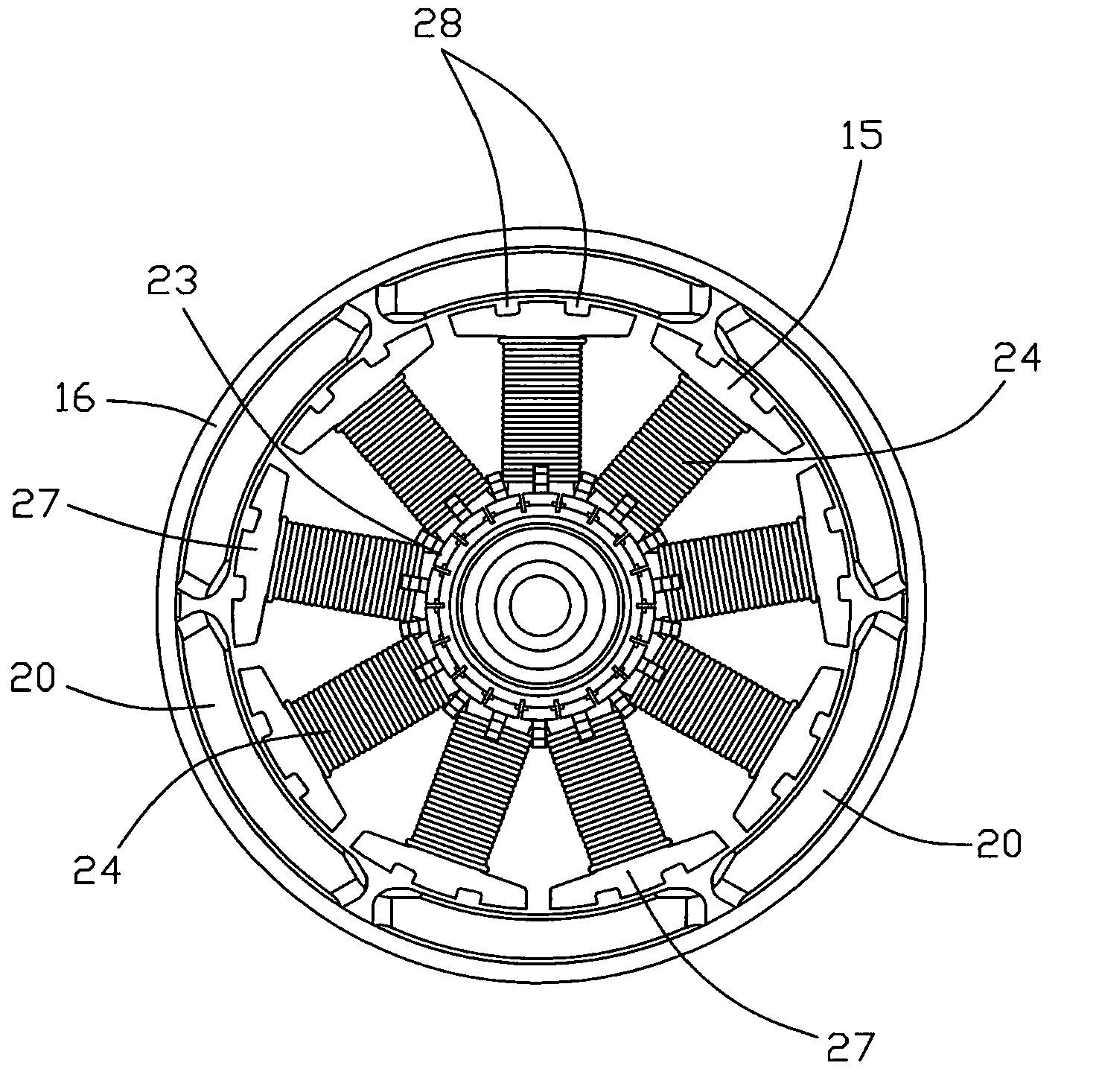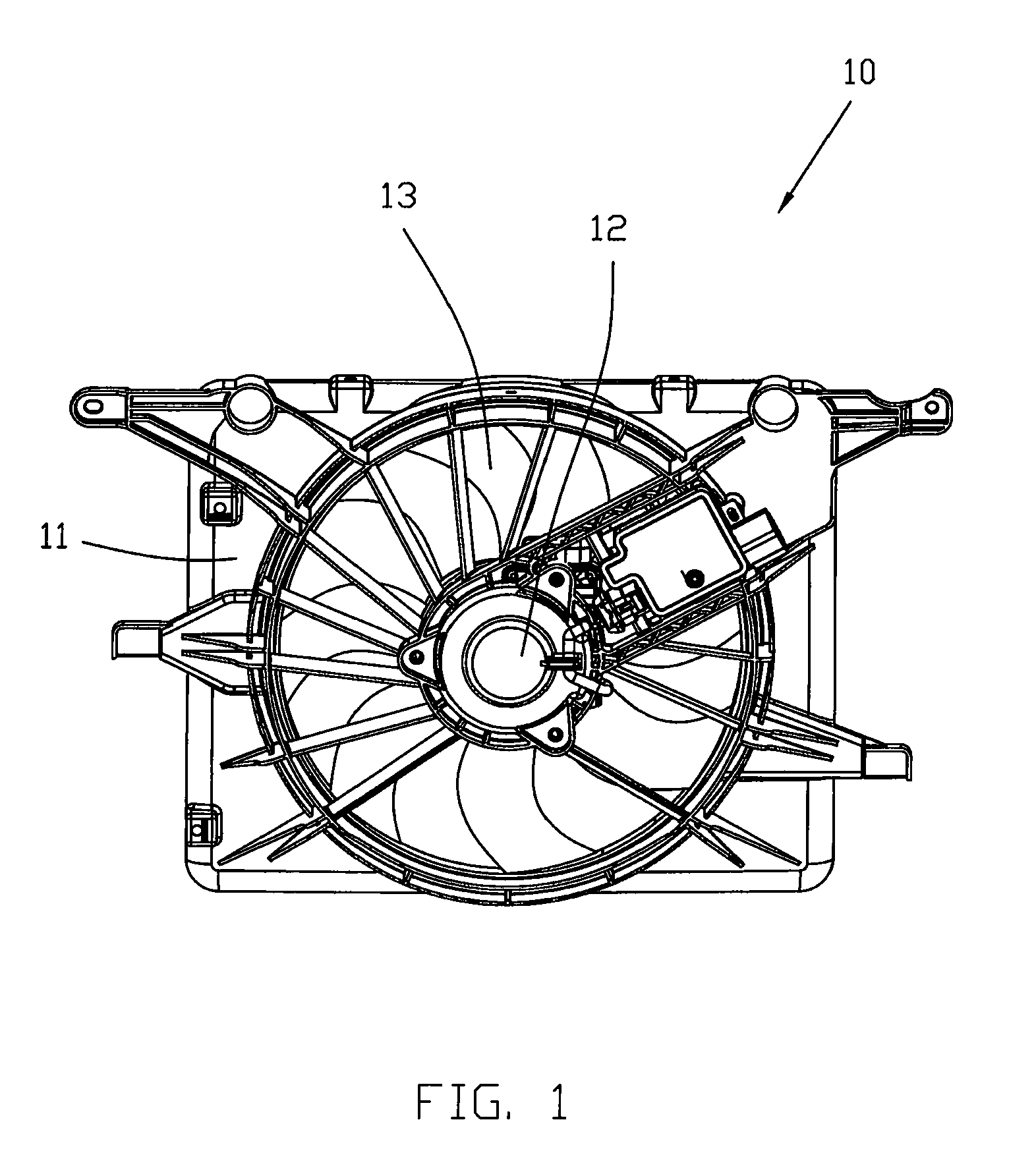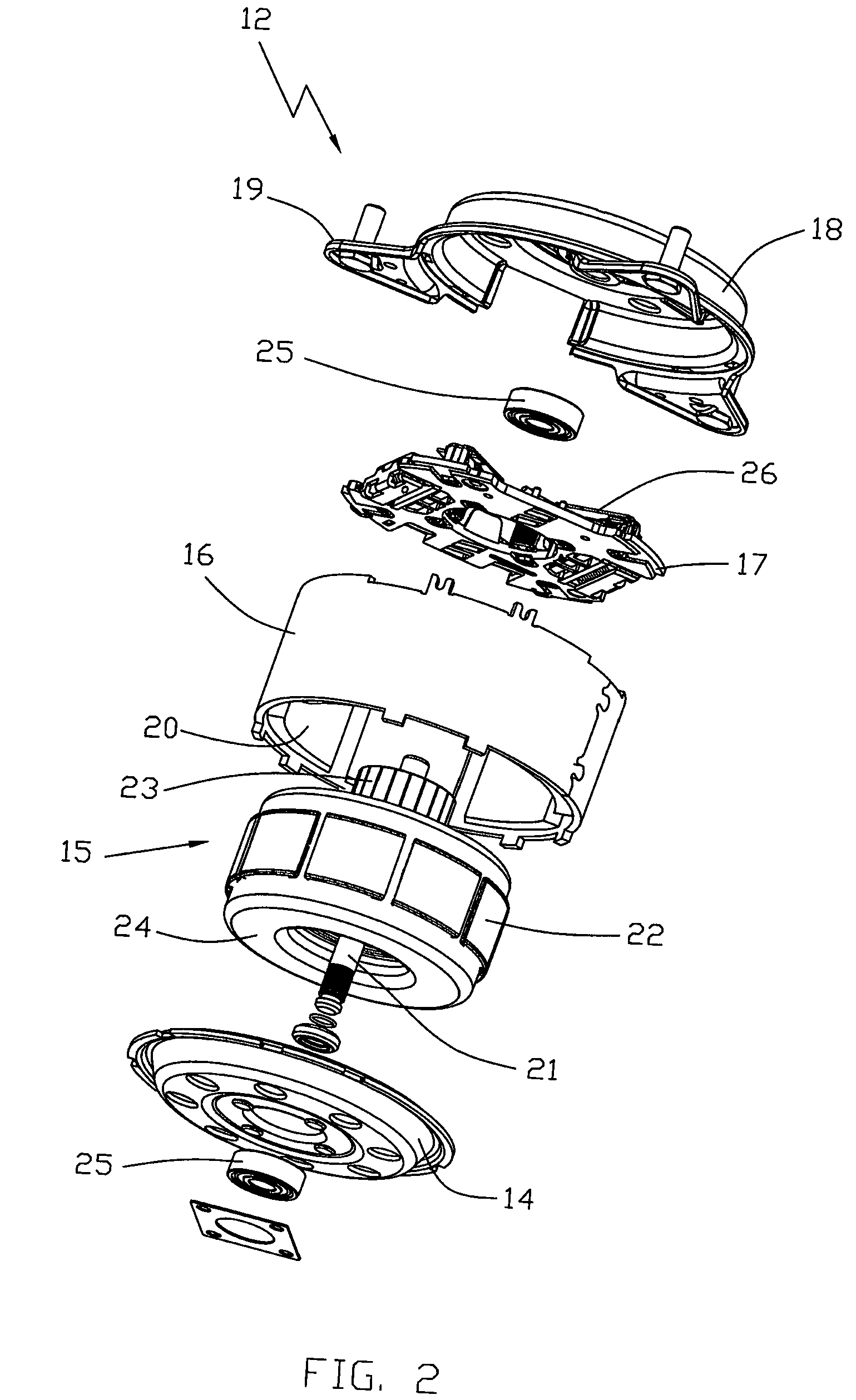Electric motor
a technology of electric motors and motors, applied in the field of electric motors, can solve the problems of difficult production, difficult to successfully put into production, and inability to use concentrated windings, etc., and achieve the effect of reducing the weight and size of pmdc motors without reducing performance or power, and high power density applications
- Summary
- Abstract
- Description
- Claims
- Application Information
AI Technical Summary
Benefits of technology
Problems solved by technology
Method used
Image
Examples
first embodiment
[0051]Taking FIGS. 3 & 4 as the first example and assuming that brushes B1 and B4 are the positive brushes with brush B1 contacting segment C1 and brush B4 contacting segment C13, and brushes B2 and B3 are the negative brushes with brush B2 contacting segment C4 and brush B3 contacting segment C10, the current paths and the resulting magnetic field are now described.
[0052]The current flows through positive brushes B1, B4 through segments C1, C7, C13 into two parallel paths, one through coils W1 / W7 (W1 and W7 are parallel connected by equalizer E1, E2), W6, W2 / W8 (W2 and W8 are parallel connected by equalizer E3, E4), the other through coils W5, W3 / W9 (W3 and W9 are parallel connected by equalizer E5, E6), W4 through segments C4, C10, C16 to negative brushes B2, B3.
[0053]This creates the following magnetic poles on the rotor. Teeth T3, T6, T9 become North poles, and teeth T1, T2, T4, T5, T7, and T8 become South poles which react with the stator poles to cause the rotor to rotate in C...
second embodiment
[0067]Looking now at FIGS. 5 & 6 as the second example and assuming that brushes B1 and B3 are the positive brushes with brush B1 contacting segment C1 and brush B3 contacting segment C13, and brushes B2 and B4 are the negative brushes with brush B2 contacting segment C4 and brush B4 contacting segment C16, the current paths and the resulting magnetic fields are now described.
[0068]The current flows through positive brushes B1, B3 through segments C1, C7, C13, C19 into four parallel paths, one through coils W1, W6, W5, another through coils W7, W12, W11, a third through coils W2, W9, W10, and the fourth through coils W8, W3, W4 through segments C4, C10, C16, C22 to negative brushes B2, B4.
[0069]This creates the following magnetic poles on the rotor. Teeth T3, T6, T9, and T12 become North poles, and teeth T1, T2, T4, T5, T7, T8, T10, and T11 become South poles which react with the stator poles to cause the rotor to rotate in the CCW direction.
[0070]As the rotor turns the brushes move...
PUM
 Login to View More
Login to View More Abstract
Description
Claims
Application Information
 Login to View More
Login to View More - R&D
- Intellectual Property
- Life Sciences
- Materials
- Tech Scout
- Unparalleled Data Quality
- Higher Quality Content
- 60% Fewer Hallucinations
Browse by: Latest US Patents, China's latest patents, Technical Efficacy Thesaurus, Application Domain, Technology Topic, Popular Technical Reports.
© 2025 PatSnap. All rights reserved.Legal|Privacy policy|Modern Slavery Act Transparency Statement|Sitemap|About US| Contact US: help@patsnap.com



